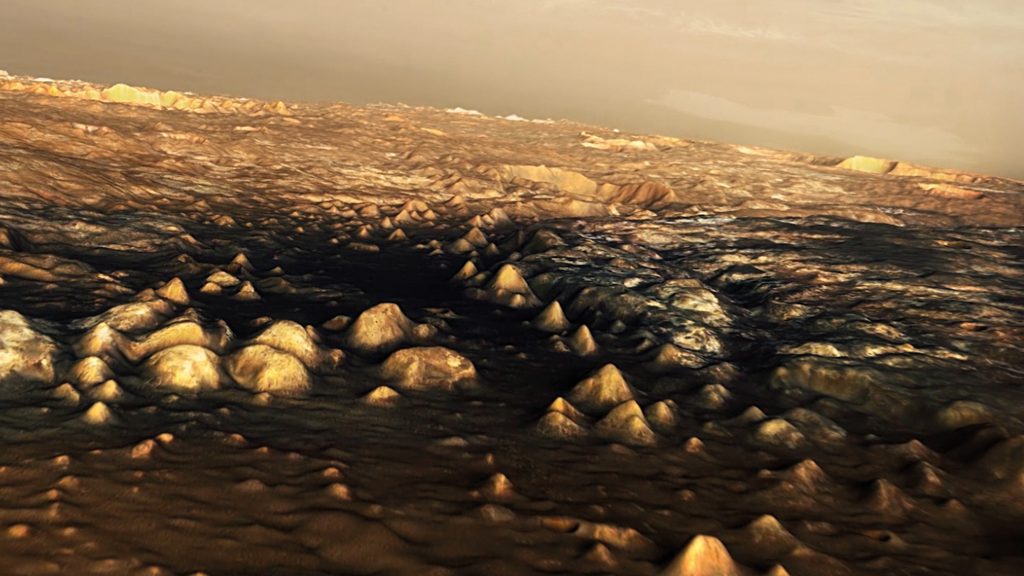Flying over Mars
Home to the sweeping highlands of Mars, pockmarked with craters, the region is 2.3 million square kilometres in size. It also includes parts of the Ares Vallis valley, the chaotic landscape of Aram Chaos, the ancient Mawrth Vallis valley and the Meridiani Planum and Chryse Planitia plains. The flm clip shows the path taken by NASA astronaut Mark Watney in the blockbuster film ‘The Martian’. In order to generate the unique mosaic, scientists from the DLR Institute of Planetary Research used data from the HRSC camera (High Resolution Stereo Camera) on board ESA’s Mars Express spacecraft, which has been in orbit around the Red Planet since 25 December 2003. Nine sensors record the surface from a variety of angles to permit mapping of Mars in high resolution, colour and in three dimensions. In order to produce the 3-D opening credits to the successful US cinema release, the scientists processed the three-dimensional elevation models and perspective images, combining the 50 to 100 kilometre-wide image strips to produce a large-format and uniform map. Due to the detailed terrain data and the immense expansion of the region
shown here, almost fve months of pure computing time was necessary to produce this flm clip.
To this day, the HRSC camera has already scanned approximately 70 percent of the Martian surface with image resolutions of 10 to 20 metres, which are used to create highly precise 3-D maps. Coverage with image resolutions of up to 100 metres is already at 97 percent. The film obtained from this mosaic impressively shows the elevation differences between the various Martian regions (with approximately double super-elevation). In addition, these maps will be used as a basis to select landing sites before future missions touch down on the Red Planet. The HRSC was developed at DLR and built in cooperation with industrial partners. The DLR Institute of Planetary Research in Berlin Adlershof is responsible for operations and scientifc management.
German Aerospace Center (DLR)
Ulrich Köhler · E-Mail: ulrich.koehler@dlr.de · DLR.de/en
Lorem ipsum dolor sit amet, consectetuer adipiscing elit
Lorem ipsum dolor sit amet, consectetuer adipiscing elit, sed diam nonummy nibh euismod tincidunt ut laoreet dolore magna aliquam erat volutpat. Ut wisi enim ad minim veniam. Quis nostrud exerci tation ullamcorper suscipit lobortis nisl ut aliquip ex ea commodo consequat. Duis autem vel eum iriure dolor in hendrerit in vulputate velit esse molestie consequat, vel illum dolore eu feugiat nulla facilisis at vero eros et accumsan et iusto odio dignissim qui blandit praesent luptatum zzril delenit augue duis te feugait nulla facilisi.
Ich bin ein Textblock. Klicken Sie auf den Bearbeiten Button um diesen Text zu ändern. Lorem ipsum dolor sit amet, consectetur adipiscing elit. Ut elit tellus, luctus nec ullamcorper mattis, pulvinar dapibus leo.
Deutsches Zentrum für Luft- und Raumfahrt (DLR)
Barbara Milow · E-Mail barbara.milow@dlr.de

